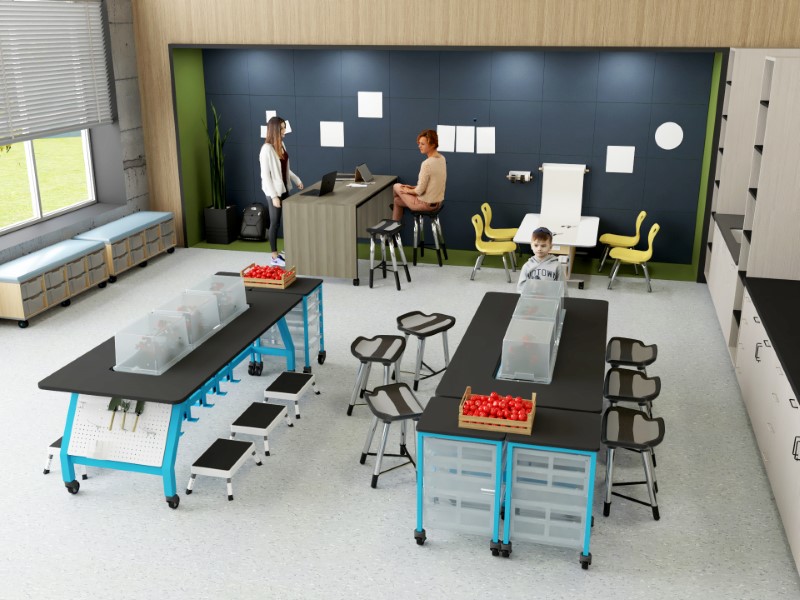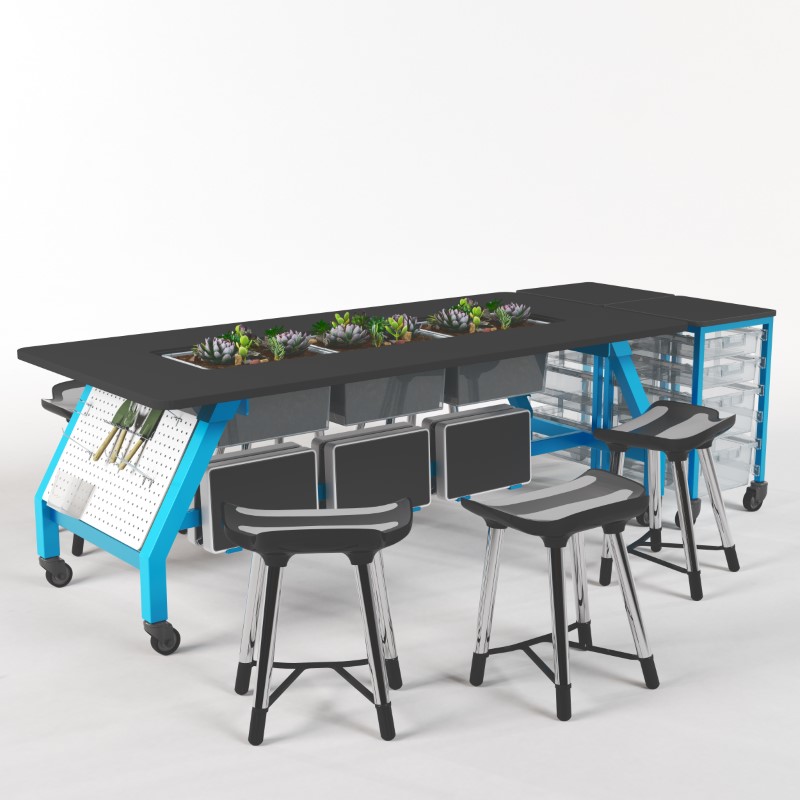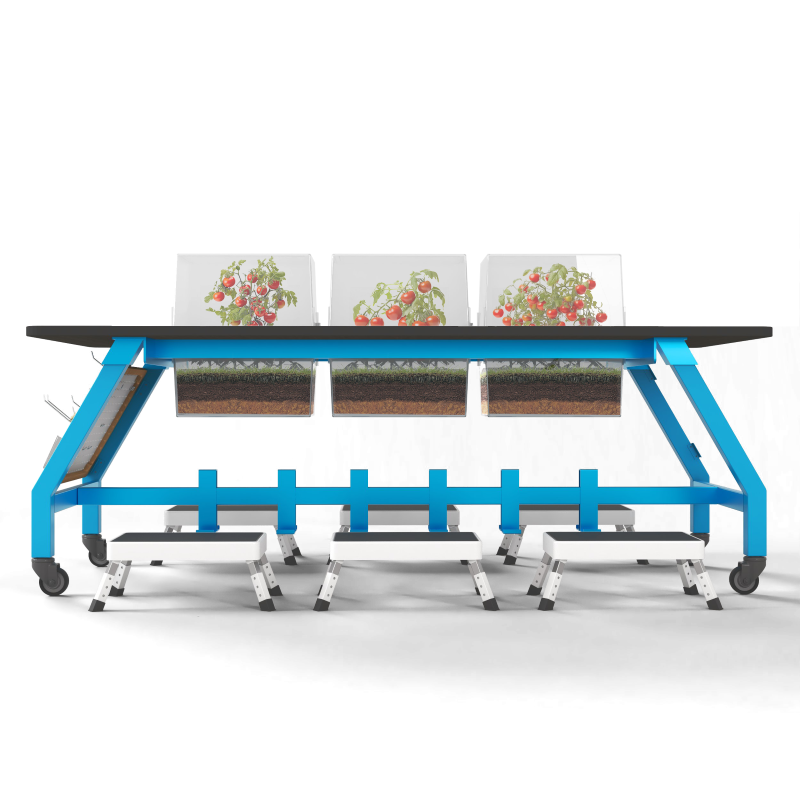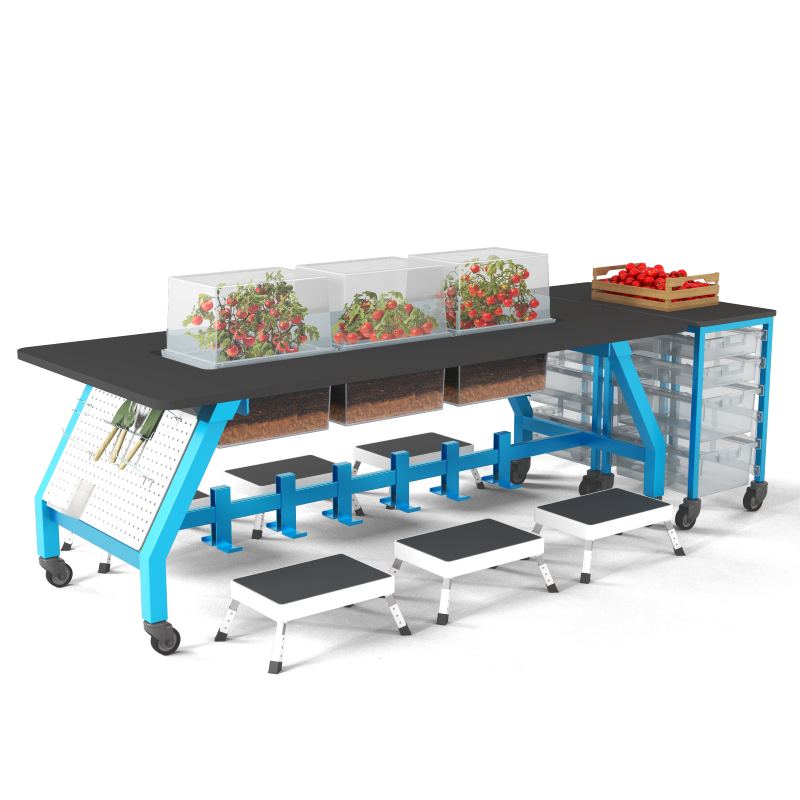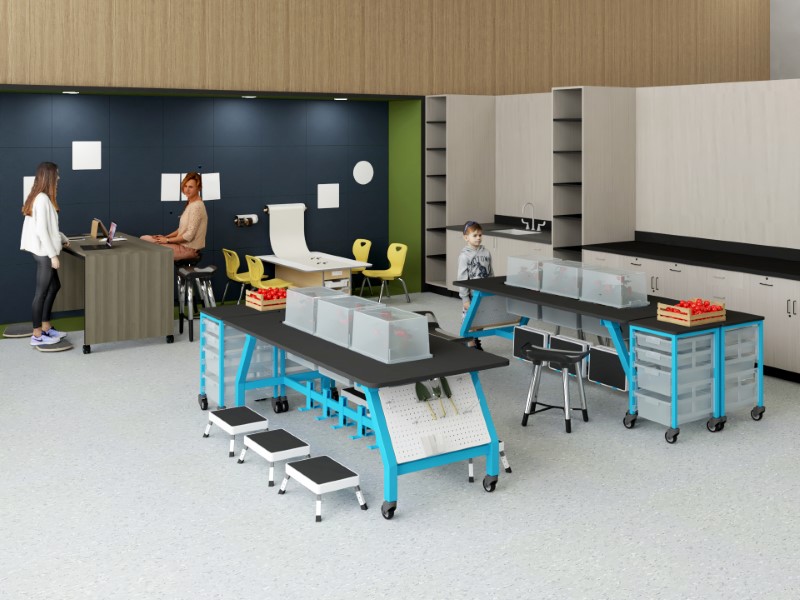Featuring:
Educational Specialist – Heather Caldwell | Creative Director – Franco Modolo | Director of Education – Hannah Tejeda
“Nature” is what we see –
The Hill – the Afternoon –
Squirrel – Eclipse – the Bumble bee –
Nay – Nature is Heaven –
Nature is what we hear –
The Bobolink – the Sea –
Thunder – the Cricket –
Nay – Nature is Harmony –
Nature is what we know –
Yet have no art to say –
So impotent Our Wisdom is
To her Simplicity.
~ Emily Dickinson
How many of you have built a fort? A fort outside? Or have paused to hear the birds while you walk? Have been fortunate to see and hear – experience the ocean? How many of you have ripped grass from the ground, dug for worms, have searched for buried treasure or more?
Learners today are not getting outside – let alone being given access to nature-based activities inside.
Emphasized in Balanced and Barefoot: How Unrestricted Outdoor Play Makes for Strong, Confident, and Capable Children – author Angelo J. Hanscom shares, “Maybe 4-6 hours a day outside isn’t doable but the current statistics say that the average child only gets 4-7 minutes of outdoor free play every day. This means that the average child is probably outside for 30 minutes or so a few times a week.”
“If children can consume media through screens 1200 hours a year on average than the time is there and at least some of it can and should be shifted towards a more productive and healthy outcome.”
Data Speaks for Itself
Spotlight Excerpts from Key Findings:
- Children & Nature
- National Wildlife Federation
- International Research in Geographical and Environmental Education
- Frontiers in Psychology
- World Wide Fund for Nature / Schools for Nature
“Research shows that the number of children attending nature preschools annually has increased from an estimated 10,000 children in 2017 to 25,000 in 2022.”
“Research highlights that daily opportunities for pupils to connect with nature are scarce in most schools. It reveals that only 27% of schools surveyed have integrated outdoor learning into their curriculum for all learners, and over a third exclude it entirely. This equates to a significant portion of pupils – 35% of schools surveyed – miss out on the enriching experience of outdoor learning. For 11-16 year olds there is an even greater impact, with over half of secondary schools (56%) offering no outdoor learning opportunities.”
The Benefits of Being & Learning Outdoors
The following list is not comprehensive, however, highlights key findings in outdoor education research:
- School performance increases when children learn outdoors.
- Learning outdoors is active and increases students’ physical, mental, and social health.
- Learning outdoors supports child development.
- Teaching and learning outdoors is fun.
- Learning outdoors helps develop a sense of place and civic attitudes and behaviors.
- Outdoor education engages families and the community.
- Outdoor play and outdoor lessons have an impact on subsequent indoor learning – decreasing stress and increasing focus, attention, motivation, and engagement with material.
- There is a relationship between learning outdoors, engagement in the process, and decreased inclination to drop out of school.
- Children who spend more time outdoors in nature, particularly at school, learn better.
This is not just Biophilic Design…
In the doorway of this exigency, lives the world of educational design. A current buzz-word in design, especially educational design, is Biophilic.
Architectural specialists, Blurring Boundaries, identifies Biophilic Design as, “a philosophy that seeks to harmonize the built environment with nature. Rooted in the belief that humans have an innate connection to nature, biophilic design incorporates natural elements, materials, and processes to create spaces that promote well-being, enhance productivity, and contribute to environmental sustainability.”
The criteria which Blurred Lines follows as principles of Biophilic Design are:
- Environmental Features – use of plants and greenery, sunlight and well-ventilated spaces, water features and natural materials, views of natural landscapes.
- Natural Shapes and Forms – botanical motifs and biomorphic forms, curved and irregular shapes, structures resembling natural forms (tree columns, shell-like domes etc.).
- Natural Patterns and Processes – sensory variability (light, sound, textures), dynamic lighting and shading, central focal points and patterned wholes.
- Light and Space – use of natural and filtered light, creation of light pools and reflected light effects, spaciousness and spatial variability, inside/outside connectivity.
- Pace-Based Relationships – use of locally sourced materials, integration of cultural and ecological elements, preservation of site’s natural topography and vegetation.
- Evolved Human-Nature Relationships – prospect and refuge, exploration and discovery, security and protection, attraction and beauty.
Administering the title Biophilic Design to educational spaces that merely include singular plants and variations of texture are not enough. This buzz-term has positively altered the way this industry approaches structural design, spatial design, interior design etc.
BUT with the juxtaposition of increased Biophilic Design and decreased time outdoors – it does not alleviate the extreme problematic issue of learners being separated from nature.
What can we do?
Introducing design elements which actively follow Blurred Lines principles of Biophilic Design in combination with outdoor experiences/nature-based experiences becomes best-practice. To truly sow exploration and curiosity, to truly reap the internal benefits of nature, one must experience these elements.
Welcome, BioTable
The Biotable, a 2024 award-winning product, is the result of a design process focused on exploratory thinking and bridging the gap between learner and nature. The goal was to create more than just a table—it’s an experiential learning platform that fosters curiosity, adaptability, and inclusivity. This vision was driven by the belief that educational furniture should not only support learning but also cultivate interaction with the environment, encouraging all to engage in hands-on exploration both indoors and outdoors.
Biotable was created from a highly detailed development process – adhering to levels of criteria and feedback:
- Research & Concept
- Sketching & Ideation
- Material Selection & Sustainability
- Prototyping & Social Impact Partnership
- Final Design & Refinement
To ensure that every stage of Biotable’s development reflected a nature-based vision, personnel endlessly reviewed its functionality, durability, creativity, and accessibility. The Biotable’s 2024 award recognition highlights its success in redefining educational spaces by fostering exploration, environmental connection, and social impact – explicitly by incorporating nature-based solutions.
Nature is…
Nature is what we see. Nature is what we hear. Nature is what we know.
Nature drives our body’s natural rhythm and inspires neurological connections which would not otherwise exist.
If there won’t be a push for learners to step outside – we can push to let the outside… in.
References
1,000 Hours
https://www.1000hoursoutside.com/blog
Children and Nature
http://www.childrenandnature.org/downloads/Educationsynthesis.pdf
National Wildlife Federation
http://www.nwf.org/~/media/PDFs/Be%20Out%20There/Back%20to%20School%20full%20report.ashx
International Research in Geographical and Environmental Education
Auer, M. R. (2008). Sensory perception, rationalism and outdoor environmental education. International Research in Geographical and Environmental Education, 17, 6–12.
Frontiers in Psychology
Kuo, M., Browning, M., & Penner, M. (2018). Do lessons in nature boost subsequent classroom engagement? Refueling students in flight. Frontiers in Psychology.
World Wildlife Fund
https://www.wwf.org.uk/sites/default/files/2024-09/Schools-for-Nature-Report-2024.pdf

